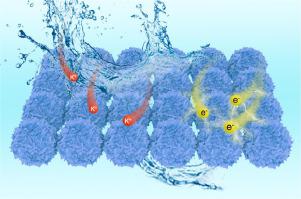Energy Storage Materials ( IF 18.9 ) Pub Date : 2020-10-20 , DOI: 10.1016/j.ensm.2020.10.017 Shuaitong Liang , Haiting Shi , Zhenjiang Yu , Qingsong Liu , Kedi Cai , Jiajun Wang , Zhiwei Xu

|
Conversion-based metal sulfides are regarded as promising anode materials for potassium-ion batteries (PIBs) owing to their high theoretical capacity. Although great advances have been made in PIBs, a comprehensive understanding of state-of-the-art structural design that mitigates the volume expansion upon potassiation/depotassiation remains elusive. Herein, with the established structure-property relationship between the different dimensions and the mechanical degradation with cycling, we suggest the material design rules of conversion anodes for high-performance PIBs via a dimensional engineering approach. Compared with the low-dimensional conversion anode (e.g. spherical and tubular), the multi-dimensional flower like structure formed by interlacing sheets provides the 3D network of ion transport and alleviates the stress concentration, exhibiting improved structural stability and superior electrochemical properties. Synchrotron X-ray tomography demonstrates the interconnected visual ion diffusion paths within the multi-dimensional structure and the decreased morphological complexity. Additionally, modeling of reaction-induced deformation shows that the multi-dimensional design rules of electrode materials can alleviate the uneven distribution of stress during K-ion storage. The material design rules discovered in this study will be proverbially applicable for constructing high capacity and excellent stability conversion-based anode.
中文翻译:

通过尺寸工程揭示钾离子电池转化基负极的设计原理
基于转化的金属硫化物具有很高的理论容量,因此被认为是钾离子电池(PIB)的有希望的负极材料。尽管PIB取得了很大的进步,但是对减轻结构上的影响的最新技术结构设计的全面了解仍然难以捉摸。在此,通过建立不同尺寸与循环机械降解之间的结构性质关系,我们通过尺寸工程方法提出了高性能PIB转换阳极的材料设计规则。与低维转换阳极(例如球形和管状)相比,通过交错片材形成的多维花状结构提供了离子迁移的3D网络并减轻了应力集中,具有改善的结构稳定性和优异的电化学性能。同步加速器X射线断层扫描显示了多维结构内相互连接的可视离子扩散路径,并降低了形态复杂性。此外,反应诱发变形的建模表明,电极材料的多维设计规则可以缓解K离子存储过程中应力的不均匀分布。这项研究中发现的材料设计规则将特别适用于构建高容量和优异稳定性的基于转换的阳极。此外,反应诱发变形的建模表明,电极材料的多维设计规则可以缓解K离子存储过程中应力的不均匀分布。这项研究中发现的材料设计规则将特别适用于构建高容量和优异稳定性的基于转换的阳极。此外,反应诱发变形的建模表明,电极材料的多维设计规则可以缓解K离子存储过程中应力的不均匀分布。这项研究中发现的材料设计规则将特别适用于构建高容量和优异稳定性的基于转换的阳极。











































 京公网安备 11010802027423号
京公网安备 11010802027423号